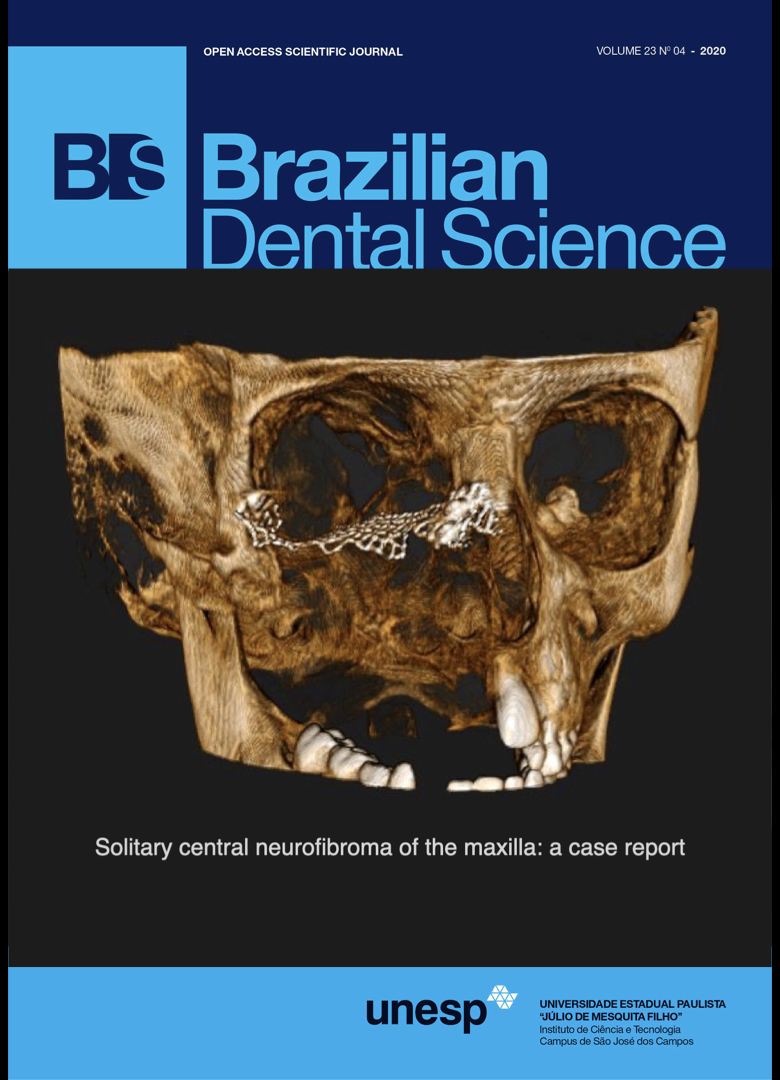Referral pattern of periodontal disease among general dental practitioners in iraq
DOI:
https://doi.org/10.14295/bds.2020.v23i4.2036Abstract
Objectives: To evaluate the type of “periodontal treatment” performed by general dental practitioners and the referral patterns of periodontists in Iraq. Material and methods: A total of 201 general dentists were asked to complete a self-administered questionnaire consisting of nine questions regarding periodontal treatment and the referral patterns of periodontists. Results: The study showed that 91.1% of general dental practitioners (GDPs) performed “phase-I therapy”, and most of them done “scaling”. Regarding surgical periodontal therapy, only 12.9% of them performed surgical periodontal therapy, half of the GDPs did gingivectomy, and less than 30% performed crown lengthening. When evaluating maintenance therapy after periodontal treatment, it was found that 77.9% of the GDPs scheduled appointments for patients in the maintenance phase, 49.4% of them after one month, 24.7% after three months, and 15.6% after six months. Using TRUF analysis, most general dentists believed that the patient and periodontal factors were responsible for the recurrence of periodontal disease. Conclusions: There is still a lack of awareness of periodontal surgical procedures among the “general dental practitioners”. Thus, it is essential to increase the comprehension of periodontal treatment among general dentists.
KEYWORDSPeriodontal treatment; Phase-I therapy; Surgical periodontal treatment; General dental practitioner; Referral pattern Attitude.
Downloads
References
American Academy of periodontology. Diabetes and periodontal disease, a two-way relationship. Suite 800 737 North Michigan Avenue Chicago 2004; Illinois 60611-2690.
Mehta A. Risk factors associated with periodontal diseases and their clinical considerations. Int J Contemp Dent Med Rev 2015; Article ID: 040115. doi: 10.15713/ins.ijcdmr.31.
American Academy of Periodontology. 2003 Practice Profile Survey, Vol. 114. Chicago: American Academy of Periodontology; 2004. p. 209-10.
Glicksman MA. Referral of the periodontal patient to the periodontist. Periodontol 2000. 2001;25:110‐3. doi:10.1034/j.1600-0757.2001.22250109.x
Linden GJ. Variation in periodontal referral by general dental practitioners. J Clin Periodontol. 1998;25(8):655‐61. doi:10.1111/j.1600-051x.1998.tb02502.x
Chestnutt IG, Kinane DF. Factors influencing the diagnosis and management of periodontal disease by general dental practitioners. Br Dent J. 1997;183(9):319‐24. doi:10.1038/sj.bdj.4809486
Drisko CH. Non surgical periodontal therapy. Periodontol 2000. 2001;25(1):77-88. doi: https://doi.org/10.1034/j.1600-0757.2001.22250106.x
Lang NP. Indications and rationale for non-surgical periodontal therapy. Int Dent J. 1983;33(2):127‐36.
Rawlinson A, Walsh TF. Rationale and techniques of non-surgical pocket management in periodontal therapy. Br Dent J. 1993;174(5):161‐6. doi:10.1038/sj.bdj.4808111
Worthington HV, Clarkson JE, Bryan G, Beirne PV. Routine scale and polish for periodontal health in adults. Cochrane Database Syst Rev. 2013;(11):CD004625.. doi:10.1002/14651858.CD004625.pub4
Claffey N, Polyzois I. Non-surgical therapy. In: Lindhe J, Lang NP, Karring T, editors. Clinical periodontology and implant dentistry. 5th ed. Oxford: Blackwell Munksgaard; 2008. p. 766-79.
Parameter on periodontal maintenance. American Academy of Periodontology. J Periodontol. 2000;71(5 Suppl):849‐50. doi:10.1902/jop.2000.71.5-S.849
Wilson RD. Referrals to specialists. In: Wilson TG and Kerman KS, editor. Fundamentals of Periodontics. 2nd ed. Chicago: Quintessence; 2003.p.465-470.
McGuire MK, Scheyer ET. A referral-based periodontal practice--yesterday, today, and tomorrow. J Periodontol. 2003;74(10):1542‐4. doi:10.1902/jop.2003.74.10.1542
-MaliA, MaliR, and Mehta H. Perception of general dental practitioners toward periodontal treatment: A survey. J Indian Soc Periodontol.2008 ; 12(1): 4–7. doi: 10.4103/0972-124X.44086
Robertson PB, del Aguila MA, Anderson MH. Trends in periodontal care. Periodontol 2000. 2002;30:104‐10. doi:10.1034/j.1600-0757.2002.03010.x
Lanning SK, Best AM, Hunt RJ. Periodontal services rendered by general practitioners. J Periodontol. 2007;78(5):823‐32. doi:10.1902/jop.2007.060391
Lee JH, Bennett DE, Richards PS, Inglehart MR. Periodontal referral patterns of general dentists: lessons for dental education. J Dent Educ. 2009;73(2):199‐210.
Ghiabi E, Matthews DC. Periodontal practice and referral profile of general dentists in Nova Scotia, Canada. J Can Dent Assoc. 2012;78:c55.
Pitts N. Preventive and minimal intervention dentistry in the undergraduate curriculum. J Dent. 2011;39 Suppl 2:S41‐S8. doi:10.1016/j.jdent.2011.10.013
Cobb CM, Carrara A, El-Annan E, Youngblood LA, Becker BE, Becker W, et al. Periodontal referral patterns, 1980 versus 2000: a preliminary study. J Periodontol. 2003;74(10):1470‐4. doi:10.1902/jop.2003.74.10.1470
Fardal Ø, Johannessen AC, Linden GJ. Tooth loss during maintenance following periodontal treatment in a periodontal practice in Norway. J Clin Periodontol. 2004;31(7):550‐5. doi:10.1111/j.1600-051X.2004.00519.x
McFall WT Jr, Bader JD, Rozier RG, Ramsey D. Presence of periodontal data in patient records of general practitioners. J Periodontol. 1988;59(7):445‐9. doi:10.1902/jop.1988.59.7.445
Downloads
Published
How to Cite
Issue
Section
License
Brazilian Dental Science uses the Creative Commons (CC-BY 4.0) license, thus preserving the integrity of articles in an open access environment. The journal allows the author to retain publishing rights without restrictions.
=================




























